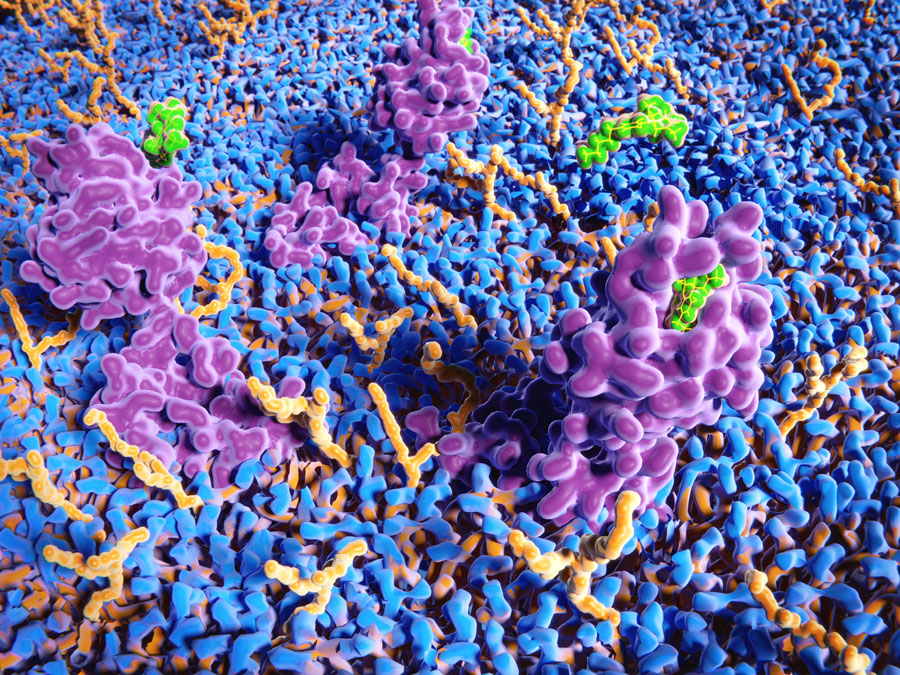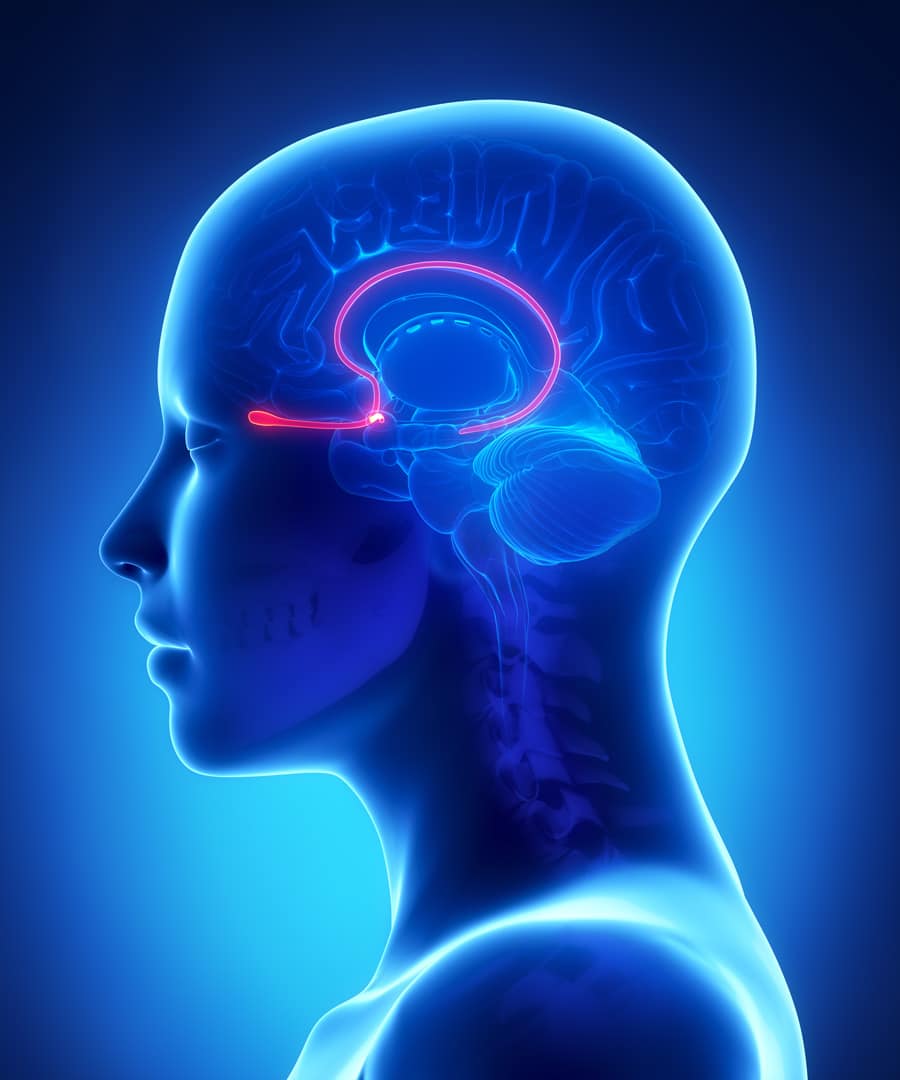Understanding the olfactory system
Since the 1960s, researchers have been curious about the effects of drugs on the body. One of those drugs under investigation was cannabis, and by the late 80s, researchers knew about receptors in the brain which could bind to certain compounds in cannabis known as cannabinoids. This began to explain how cannabis (or cannabinoids to be more precise) can affect the brain, but also raised some interesting questions: why would we have these receptors if cannabinoids only came from external sources?
Finally, in 1992, researchers came up with an answer: it turned out that these receptors are more important than previously thought; we have our own forms of cannabinoids produced in the body. Due to the history of cannabis in this research, this system was named the endocannabinoid system. Discovered by accident, the endocannabinoid system has turned out to be one of the most important systems within our entire bodies, responsible for maintaining everything in balance. Essentially, if the endocannabinoid system is disrupted, it can affect the whole body as it controls many of our day-to-day functions, including our sense of smell. It has been found that the endocannabinoid system is responsible for many of our bodily functions, from sleeping and appetite, to fertility and cognition, to name just a few.

Our understanding of the endocannabinoid system has significantly progressed in areas of the brain such as the hippocampus and the amygdala, but the study of this system in the olfactory pathway is still in its early days. For Prof Thomas Heinbockel at Howard University College of Medicine, the olfactory system is an ideal place for investigating how the endocannabinoid system regulates the connection between the brain and the nose to achieve a response: in this case, recognise a smell. “Understanding the endocannabinoid system in action may shed light on how endocannabinoids lead to altered sensory perception,” says Prof Heinbockel.
Fast response
For Prof Heinbockel, the first step was to understand how these lipid-based cannabinoids were capable of controlling the activity of neurons. Neuronal activity is typically extremely fast and it was believed that lipid compounds could not compete on the same level. Using a variety of techniques, the team showed that at 22°C, endocannabinoid synthesis and release occurs within 75-190 milliseconds (ms) after the stimulus, and that value can even drop down to 50 ms at 37°C. “That’s almost an order of magnitude faster than previously thought,” says Prof Heinbockel. “Our findings imply that lipid messenger dynamics are comparable with those of neurotransmitters and can modulate neuronal interactions on a similarly fast timescale.”
Retrograde signalling
From this work, researchers were able to establish that, once they’re released, endocannabinoids find the receptors on nearby neurons and force them to reduce release of neurotransmitters. This is known as a retrograde signalling. Endocannabinoids can operate this way in various regions in the brain, including the hippocampus, cerebellum, neocortex and amygdala, but the olfactory system remains a mystery.

Neurons in the brain can largely be separated into two groups. Some cause small electrical currents in neighbouring cells and are known as excitatory neurons as they ‘excite’ other neurons; others stop neighbouring neurons from generating a current, and are called inhibitory neurons. It’s important to have a balance of these neurons in the brain – if your brain is too excitable this can cause seizures, like in epilepsy. If your brain is full of inhibitory neurons then none of them would be able to communicate and you wouldn’t be here.
Discovered by accident, the endocannabinoid system has turned out to be one of the most important systems within our entire bodies.
Like all areas of the brain, in the olfactory system there is a mix of excitatory and inhibitory neurons: the external tufted neurons are excitatory and the periglomerular neurons are inhibitory. These neurons communicate to each other all the time. Let’s imagine that the external tufted neuron is an excitable child and the periglomerular neuron is an adult trying to control their offspring. When the child is moderately excitable, the parent can tell them to calm down now and again and the child does so. However, when the child gets really excitable they start throwing their toys at the parent, preventing the parent from calming the child down and they continue on their excitable streak for a while. Like the excitable child throwing toys, when an external tufted neuron is excited by another neuron, it starts hrowing out endocannabinoids. These prevent the periglomerular neuron (the parent) from inhibiting the excitability of the external tufted neuron. The external tufted neuron continues to be excited until its neighbouring neuron stops stimulating it. Prof Heinbockel confirmed endocannabinoids are involved by adding a drug called AM251 to block endocannabinoid receptors. When AM251 was added, the periglomerular neurons (the parent) inhibited the excitatory activity of the external tufted neuron (the child). This retrograde signalling allows inhibition to be lifted for a short period of time. Prof Heinbockel thinks this might be key to making the olfactory system more sensitive.

Location is essential
At this stage, Prof Heinbockel had identified that cannabinoid signalling was involved in regulating the olfactory system, but the effect of endocannabinoids on the outputs of the olfactory system remained a mystery. Mitral cells are vital in connecting the olfactory bulb to the rest of the brain, they send signals from the olfactory bulb to communicate with other areas of the brain for smell recognition.
…the olfactory system is an ideal place for investigating how the endocannabinoid system regulates the connection between the brain and the nose.
The olfactory system has a multi-layer structure, including – in order from surface to the centre – the glomerular layer, the mitral layer and the granule cell layer. As a neural circuit, the glomerular layer receives direct information from the nose. The ends of the neurons coming from the nasal cavity cluster in spherical structures called glomeruli. This layer (glomerular layer) represents the first level of synaptic processing. The next level of processing occurs in the mitral layer, followed by the deepest layer made up of granule cells that connect with the mitral cells.

The final piece of the puzzle involved understanding how endocannabinoids regulate the output of the olfactory system – mitral cells. Surprisingly, Prof Heinbockel and his collaborator found that mitral cells did not have cannabinoid receptors, suggesting that if mitral cells were affected by endocannabinoids then it wouldn’t be through direct activation. They hypothesised that mitral cells were activated in an indirect way and confirmed this by monitoring the activity of mitral cells whilst stimulating cannabinoid receptors with a molecule similar to the endocannabinoid structure known as WIN 55. As predicted, WIN 55 excited mitral cells and when cannabinoid receptors were blocked, mitral cells become less excitable. The researchers concluded that endocannabinoids released from mitral cells stop periglomerular neurons from inhibiting them, allowing mitral cells to send signals across the brain. It’s thought that the relief of inhibition allows the mitral cells to become more fine-tuned in responding to odours.
Prof Heinbockel’s exciting new research shows how the olfactory system is modulated by endocannabinoids, specifically, the activity of external tufted cells and mitral cells. A better understanding of the endocannabinoid system provides greater insight into how endocannabinoids lead to altered sensory perception. This research will also be useful in understanding disorders where neuromodulator signalling has gone awry such as depression, addiction and Parkinson’s disease. Drugs that mimic or block neurotransmitters are used to treat these disorders, therefore research into neuromodulator signalling will help researchers create better treatments for these disorders. Additional research will further unravel the complexity of signal processing in the olfactory system and provide further insights into how the brain functions as a whole.

Personal Response
What practical implications do you foresee for this research? Could it be used to treat any conditions associated with the olfactory system?
<> On the one hand, some neurological disorders such as Alzheimer’s Disease and Parkinson’s Disease show strong impairment of the olfactory sense, and this acts as an early indicator of the disease. Potentially, cannabinoids can help to overcome sensory impairments and/or even delay disease progression. On the other hand, drug addiction such as marijuana substance use disorder is a brain disease that afflicts many people and costs society in terms of medical and social expense. Understanding the neurobiological mechanisms of this disease can help to develop pharmacotherapeutic treatment strategies that could prevent drug abuse.